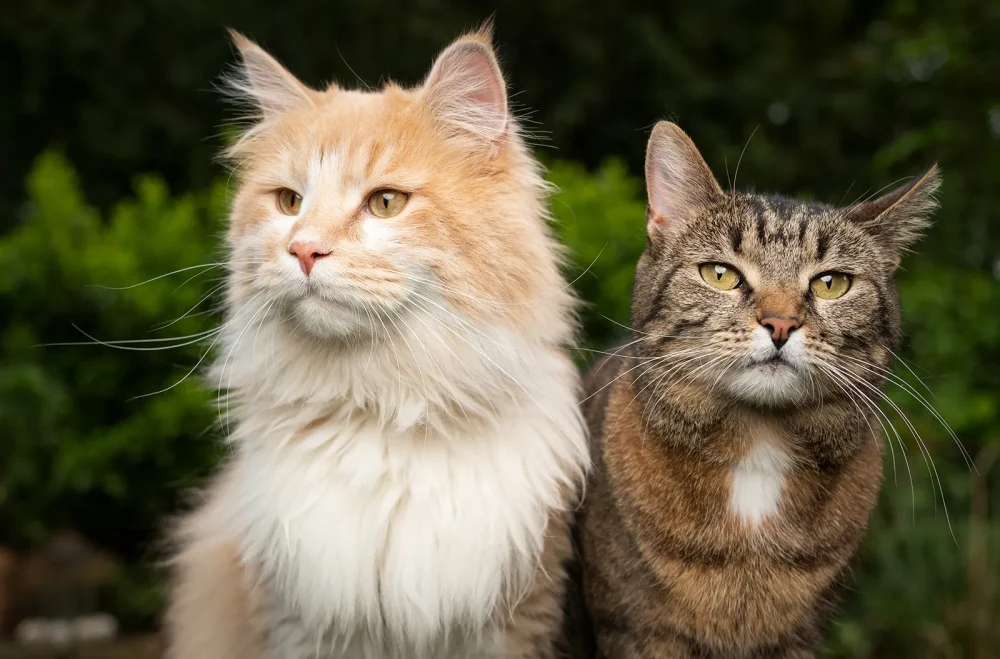The Fascinating World of Animals: An Exploration of Nature’s Rich Diversity

Animals have long been a source of fascination and inspiration for humans. Their behaviors, adaptations, and roles in the natural world reveal a complexity and beauty that are sometimes beyond our understanding. From the majestic herds of elephants roaming Africa’s savannas to the vibrant schools of fish gliding through coral reefs, animals play an essential role in maintaining the ecological balance of our planet. In this article, we delve into the incredible diversity of the animal kingdom, the unique features of various species, and the importance of conservation efforts in protecting these magnificent creatures.
The Diversity of the Animal Kingdom
The animal kingdom is home to an astonishing range of creatures, each with its own specialized characteristics and behaviors. There are approximately 8.7 million species on Earth, with over 80% of them yet to be discovered. These species range from microscopic creatures like tardigrades to the massive blue whale, the largest animal ever known to exist. The sheer variety of life forms underscores the complexity of ecosystems across the globe, each supporting a unique set of interdependent organisms.
Vertebrates and Invertebrates: The Two Major Classifications
Animals can broadly be classified into two categories: vertebrates and invertebrates. Vertebrates, such as mammals, birds, reptiles, amphibians, and fish, possess a backbone or spinal column. Invertebrates, which make up about 95% of all animal species, lack a spine. This group includes insects, mollusks, crustaceans, and arachnids. While vertebrates are generally larger and more complex, invertebrates are incredibly diverse and often possess remarkable survival strategies that vertebrates can’t match.
Mammals: The Warm-Blooded Giants
Mammals are one of the most well-known and diverse groups of animals. They share key characteristics, such as having hair or fur and being warm-blooded, which allows them to maintain a stable internal body temperature regardless of the environment. Some, like humans, dolphins, and elephants, are highly social and possess complex communication systems, while others, like tigers or wolves, are solitary hunters.
-
Elephants: Known for their remarkable intelligence, elephants are capable of forming close family bonds and exhibit behaviors that suggest an understanding of death and mourning. Their long trunks allow them to interact with their environment in unique ways, making them one of the most recognizable and beloved mammals.
-
Dolphins: These highly social marine mammals are known for their playful behavior and advanced problem-solving abilities. Their intricate social structures and ability to communicate with each other have earned them a reputation as some of the most intelligent creatures in the animal kingdom.
Birds: Masters of the Sky
Birds are another incredibly diverse group, with over 10,000 species recorded globally. They are characterized by feathers, beaks, and the ability to lay eggs. Birds have adapted to a wide variety of environments, from the frozen tundra to the lush tropical rainforests, and are often highly migratory, traveling thousands of miles to find food or suitable breeding grounds.
-
Penguins: Unlike most birds, penguins have evolved to be excellent swimmers. They have adapted to life in cold environments and are capable of diving to great depths in search of food. Penguins are a testament to the adaptability of birds, showing that flight is not always necessary for survival.
-
Eagles: These birds of prey are known for their incredible vision and powerful hunting skills. With their sharp talons and massive wingspans, eagles are at the top of their food chain, playing a crucial role in controlling populations of other animals.
Reptiles and Amphibians: The Cold-Blooded Survivors
Reptiles and amphibians, although often overshadowed by mammals and birds, are fascinating in their own right. These cold-blooded creatures have adapted to a variety of environments, from deserts to wetlands, and have developed unique survival strategies to thrive.
-
Snakes: Snakes are one of the most diverse groups of reptiles, ranging from the harmless garter snake to the venomous king cobra. They are skilled predators and rely on camouflage, stealth, and constriction to catch their prey.
-
Frogs: Frogs are often considered indicators of environmental health due to their permeable skin and dependence on clean water. They play a critical role in controlling insect populations and are an important food source for other animals.
Insects: The Unseen Architects of Ecosystems
Insects, though small in size, are arguably the most important group of animals on Earth. They pollinate plants, decompose organic matter, and form the foundation of many food webs. Ants, bees, butterflies, and beetles are just a few examples of the incredibly diverse insect world.
-
Bees: These remarkable creatures are responsible for pollinating around 75% of flowering plants, including many of the crops that humans rely on for food. Without bees, much of the world’s food supply would be in jeopardy.
-
Ants: Social insects like ants work in colonies, building complex underground networks and foraging for food. Their highly organized structure and division of labor have long been a subject of fascination for scientists.
The Role of Animals in Ecosystem Health
Animals are essential to the proper functioning of ecosystems. They help regulate populations of other species, pollinate plants, decompose organic matter, and contribute to nutrient cycling. Without animals, ecosystems would collapse, leading to a loss of biodiversity and the degradation of vital resources such as clean air, water, and soil.
-
Pollination: Many animals, especially insects, play a critical role in pollinating plants. This process is essential for the reproduction of a wide variety of crops, including fruits, vegetables, and grains.
-
Food Webs: Animals form the backbone of food webs, linking predators, prey, and decomposers. By maintaining these relationships, animals ensure that energy is transferred throughout ecosystems, preventing the overpopulation of certain species and helping to keep ecosystems balanced.
The Threats Facing Animals Today
Unfortunately, many animal species are currently facing significant threats due to human activity. Habitat destruction, climate change, pollution, poaching, and overfishing are all contributing to the decline of animal populations around the world. The IUCN Red List currently lists over 28,000 species as threatened with extinction, many of which are vital to the health of ecosystems.
Habitat Loss and Fragmentation
Deforestation, urbanization, and agriculture have led to the destruction and fragmentation of habitats, leaving animals with fewer places to live and less food to sustain themselves. As habitats shrink, animals are forced to migrate to new areas, often facing increased competition for resources.
Climate Change
Climate change is altering ecosystems at an alarming rate, affecting animal migration patterns, reproductive cycles, and food availability. Species that are unable to adapt to these rapid changes are at risk of extinction.
Poaching and Overfishing
Illegal hunting and overfishing are decimating populations of iconic species such as elephants, tigers, rhinos, and marine animals. Poaching for their body parts, including ivory, fur, and tusks, has pushed many species to the brink of extinction.
Conservation: Protecting Animals for Future Generations
Conservation efforts are crucial in ensuring the survival of endangered species and preserving biodiversity. By protecting natural habitats, enforcing anti-poaching laws, and promoting sustainable practices, we can help mitigate the threats facing animals.
-
Wildlife Reserves and Protected Areas: Creating and maintaining protected areas where animals can live without the threat of human encroachment is one of the most effective ways to safeguard species.
-
Sustainable Practices: Supporting sustainable farming, fishing, and hunting practices can reduce the impact of human activity on animal populations and their habitats.
Conclusion
The animal kingdom is a treasure trove of wonders, filled with creatures that exhibit incredible resilience, intelligence, and beauty. However, these animals are not immune to the pressures of a rapidly changing world. By understanding the critical role animals play in maintaining ecosystem health and supporting efforts to conserve their habitats, we can ensure that future generations will also be able to marvel at the diversity and majesty of the animal world.
-
Everything You Should Know About Pet Foods And Healthcare
January 25, 2023 -
Prologue to Holistic Pet Care
February 20, 2019
Latest Posts
Recent Posts
- The Enigmatic Charm of Cats: Understanding the Feline Mystique July 17, 2025
- The Essential Guide to Pet Food: Navigating Nutrition for Your Furry Companion July 11, 2025
- The Extraordinary Connection Between Dogs and Humans: Exploring the Unbreakable Bond July 10, 2025
- The Art of Pet Care: Nurturing Health, Happiness, and Longevity for Your Furry Companion July 9, 2025
- The Extraordinary Realm of Animals: A Glimpse into Nature’s Magnificent Diversity July 7, 2025
Archives
- July 2025 (5)
- June 2025 (4)
- May 2025 (3)
- December 2024 (1)
- May 2024 (1)
- March 2024 (1)
- November 2023 (1)
- September 2023 (1)
- August 2023 (1)
- June 2023 (1)
- May 2023 (1)
- March 2023 (1)
- February 2023 (1)
- January 2023 (1)
- December 2022 (1)
- August 2022 (3)
- July 2022 (1)
- April 2022 (2)
- February 2022 (1)
- December 2021 (1)
- June 2021 (1)
- March 2021 (1)
- February 2021 (2)
- January 2021 (1)
- December 2020 (1)
- August 2020 (1)
- July 2020 (2)
- June 2020 (2)
- April 2020 (1)
- March 2020 (1)
- February 2020 (3)
- January 2020 (1)
- December 2019 (1)
- November 2019 (2)
- October 2019 (3)
- September 2019 (2)
- July 2019 (6)
- June 2019 (4)
- May 2019 (7)
- April 2019 (4)
- March 2019 (4)
- February 2019 (7)
- January 2019 (3)









